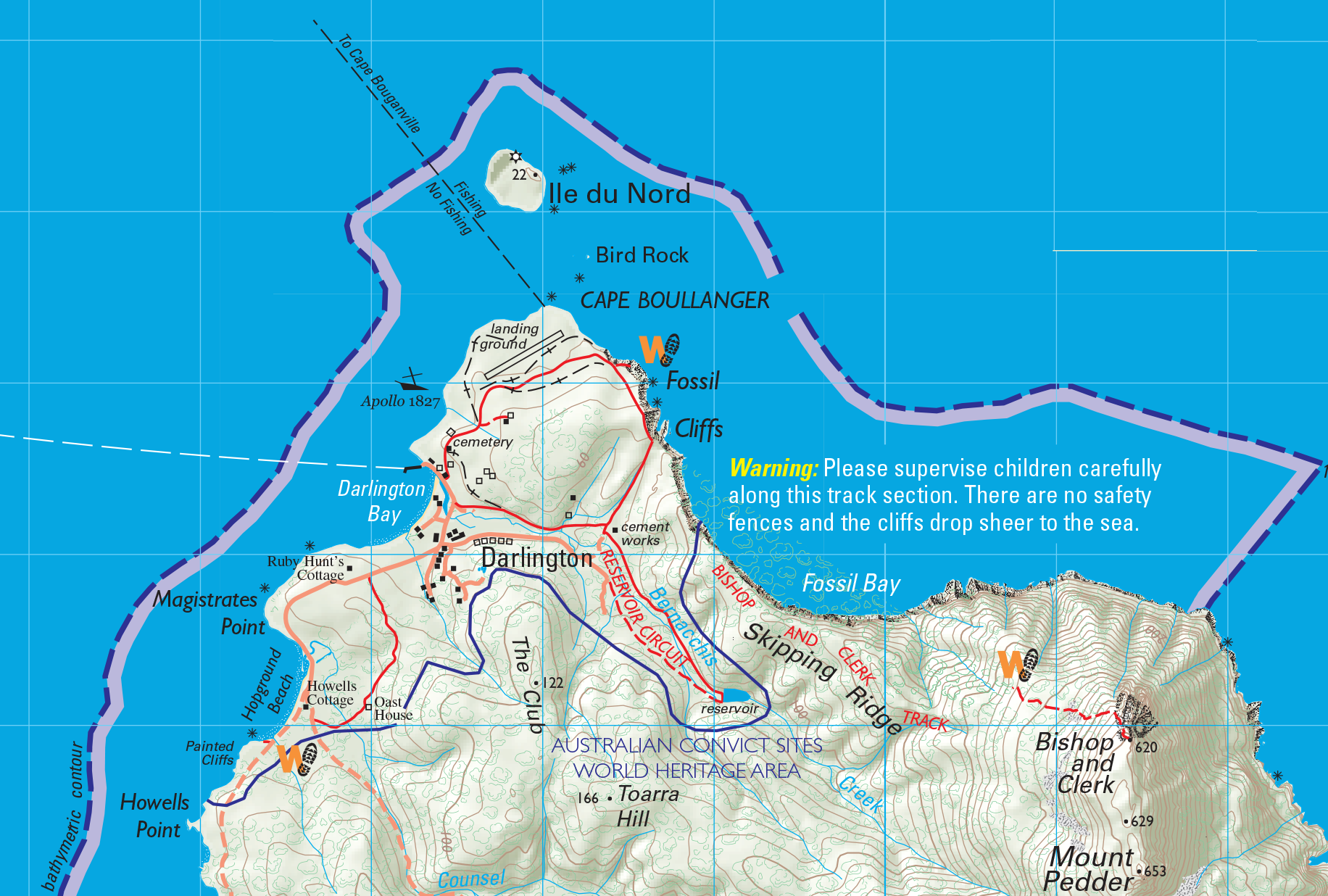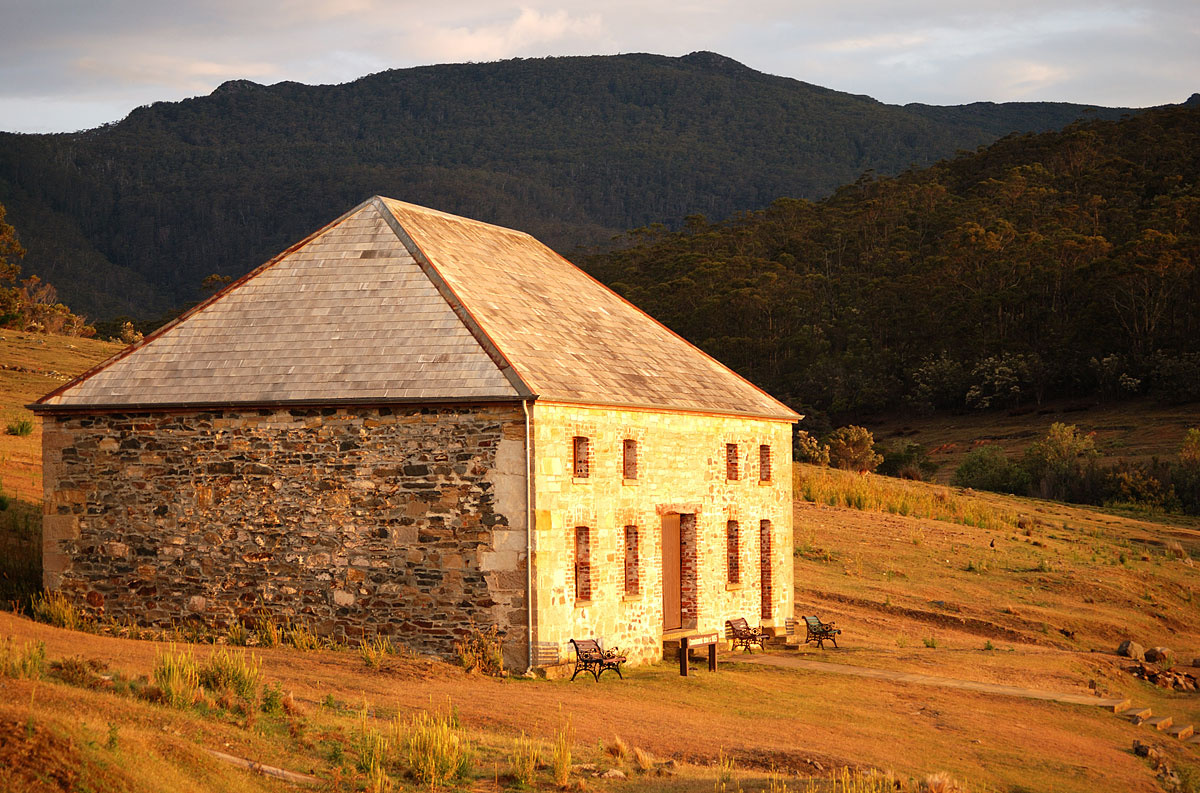
Darlington Precinct, located on Maria Island off the east coast of Tasmania, offers a glimpse into our convict past and the probation system that was unique to Tasmania.
The thirteen intact structures that remain are set amongst a relatively unchanged landscape, and uniquely demonstrating the philosophy behind the probation system. Visitors can access Maria Island, the location of Darlington, by ferry.
Darlington Probation Station is one of 11 places that make up the Australian Convict Sites World Heritage serial listing, inscribed on 31 July 2010.

Commisseriat Store (1825)
This is the oldest building on the island.
Downstairs was the office, the provision store and the spirit room. Upstairs were stores belonging to the Ordinance Department. Three soldiers were posted here to protect valued possessions.
Senior Assistant Superintendant’s Quarters (1847)
The Senior Assistant was responsible for solitary confinement of prisoners, mess arrangements, and the entire Probation Station when the superintendant was absent.
Assistant Superintendant’s Quarters (1849)
The assistant superintendants were in charge of approximately 250 convicts. Initially three buildings were planned however one was never completed.
School Master’s House (1922)
The resident teacher lived here but taught classes in an adjacent building, It is currently used as the Ranger Station.
Bernacchi’s Terraces one and two (1888)
These two terraced cottages were established using bricks which were recycled when the Separate Apartments were pulled down. The buildings were constructed in the Victorian Georgian era with more emphasis placed on
detailing. They were established after both convict periods by Diego Bernacchi, as accommodation for industrial workers in the first phase of development of the island.
Oast House (1844)
This Oast House is one of the oldest in the country. By 1847 it was producing three tonnes of hops per year. The two large brick drying towers with floors fitted with specially made ventilating tiles are still evident in the ruins.
Oficers’ Quarters (1842)
These terraced, single storey buildings reflect the Victorian/Georgian era in design. The Officers quarters were originally built to house the assistant superintendants. Smith O’Brien’s cottage was occupied by the Irish political prisoner, William Smith O’Brien, before he was transferred to Port Arthur. The Roman Catholic Clergyman’s houe was the last addition to this row of houses.
Penitentiary (1830)
One of the few buildings that remain from the first convict period, the Penitentiary was established using 200,000 bricks. Initially there were only five dormitories and a laundry. In the second convict period the prisoners
occupied 292 berths ‘like bottles in a bin’ with 66 men in each room. The convicts slept in a triple tiered system of hammocks - resembling a triple bunk bed.
Mess Hall
Up to 400 first and second class convicts gathered in this building at meal times, sitting at twenty tables. These convicts were permitted the privilege of eating with cutlery.
The third class convicts ate in the open courtyard, whilst the fourth class convicts ate in their separate apartments. Neither class was permitted eating utensils. The Mess Hall was a versatile building: it was also used as a
school room and Roman Catholic Chapel on Sundays.
Brickfields
The Brickfields region features the Workers Cottage, the Engineers Residence and the Engine House, plus many other structures including a tramway. Most of these constructions date around the Bernacchi Period, between the 1890s and the 1920s
The Coffee Palace (1888)
Built by the Maria Island Company, the Coffee Palace had two dining rooms and a lounge at the front of the building. The rear of the house was used as living quarters and also contained a kitchen. The term Coffee Palace was a name commonly used to describe a type of restaurant.
Visiting Magistrate’s Office (1842)
This building was constructed as the administrative centre for the Probation Station. It was here that convicts were also tried for minor offences. In following years it was used as a shop and Post Office.